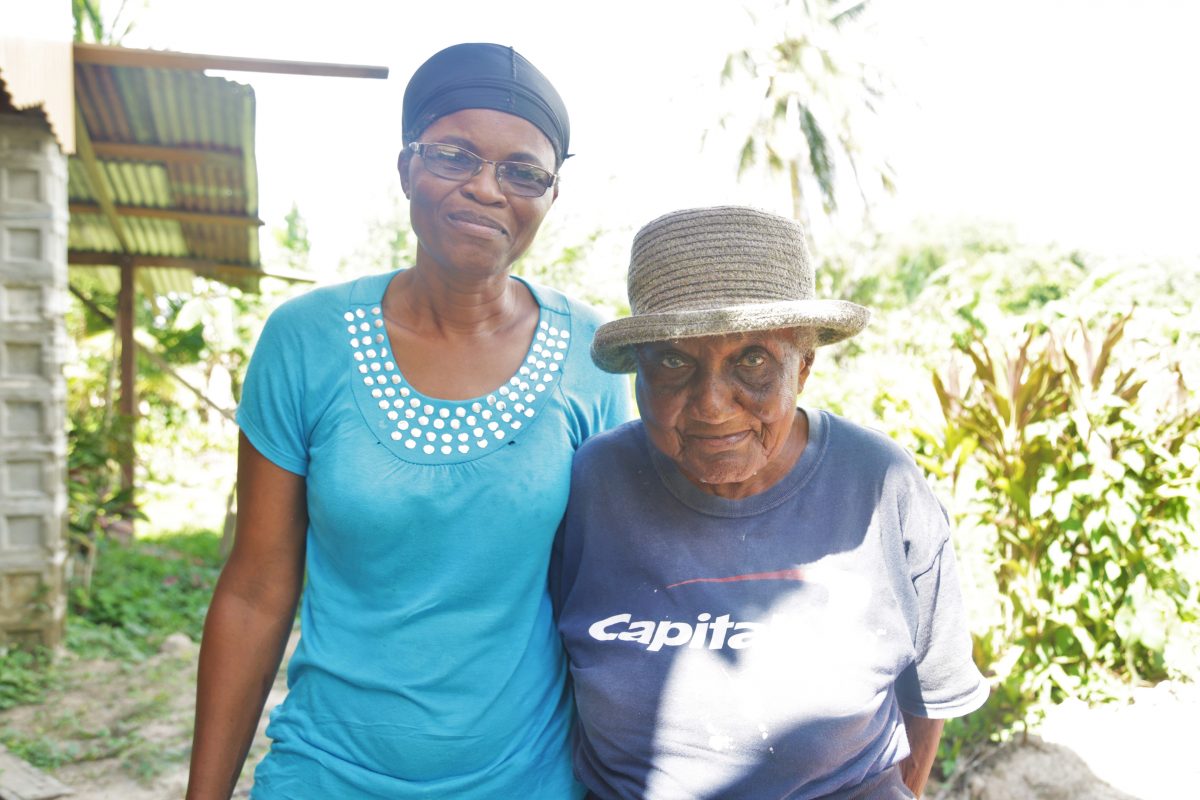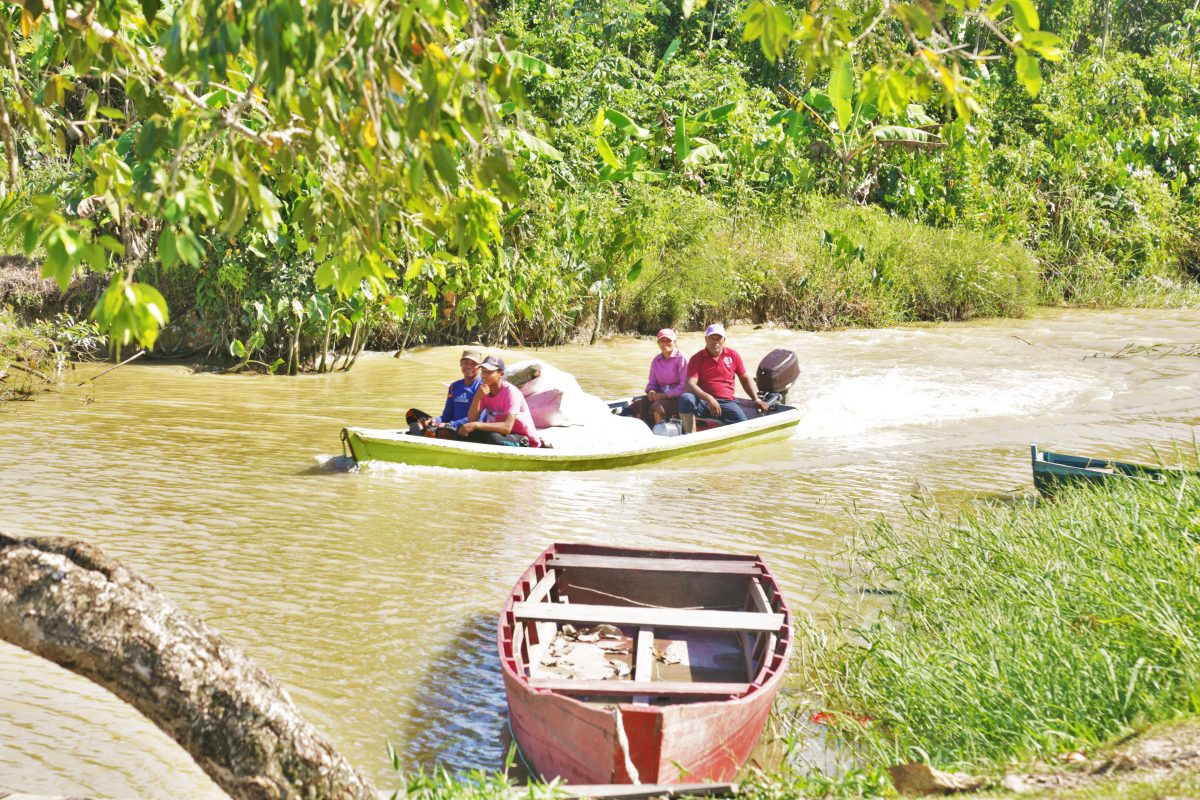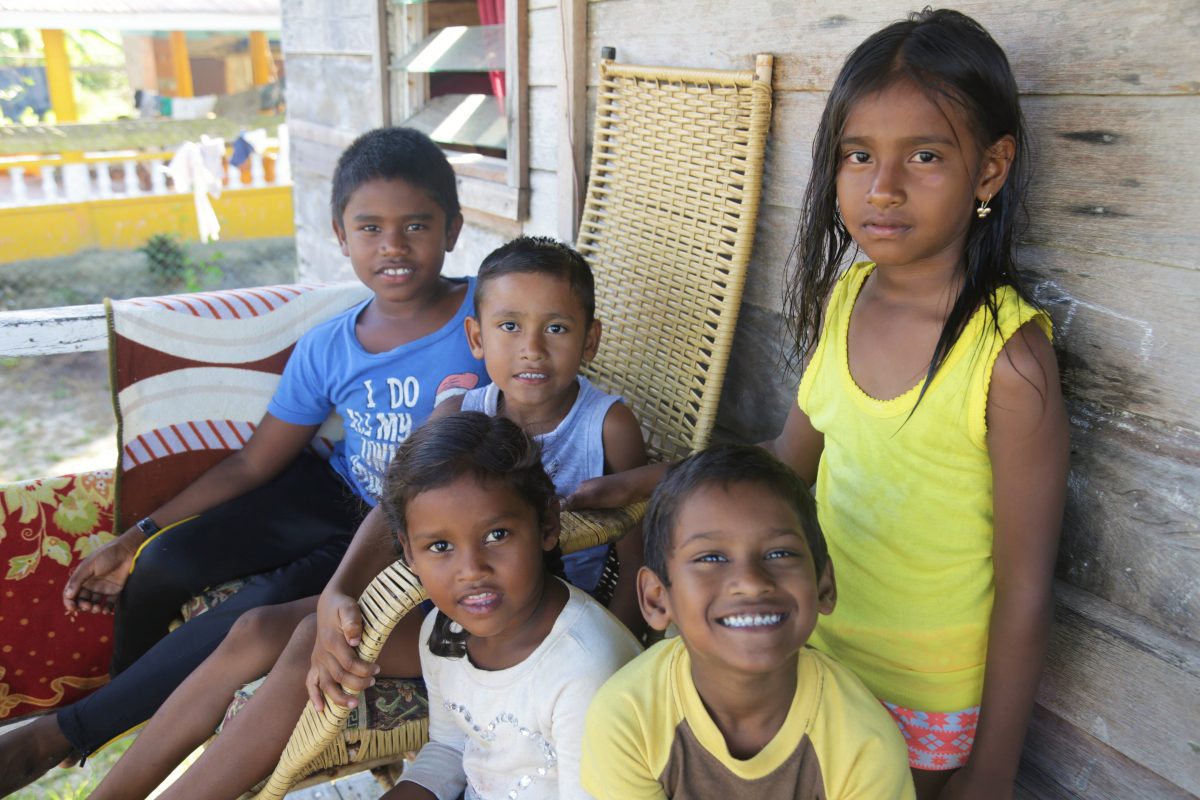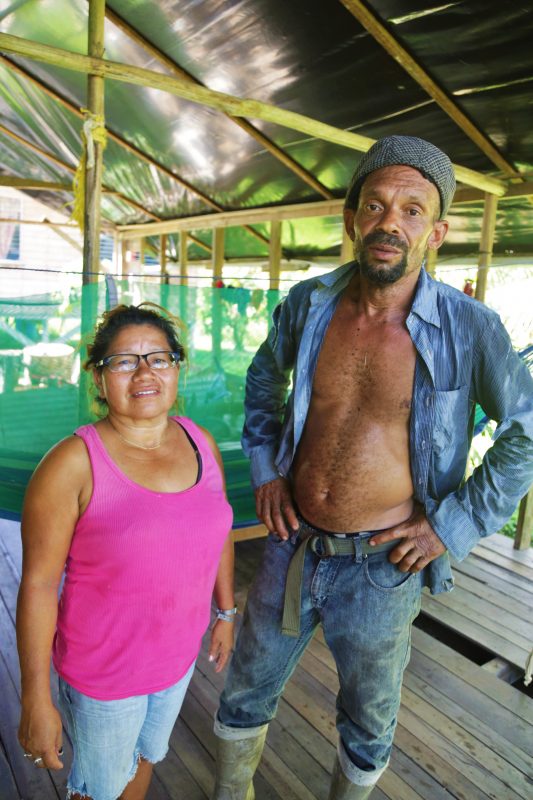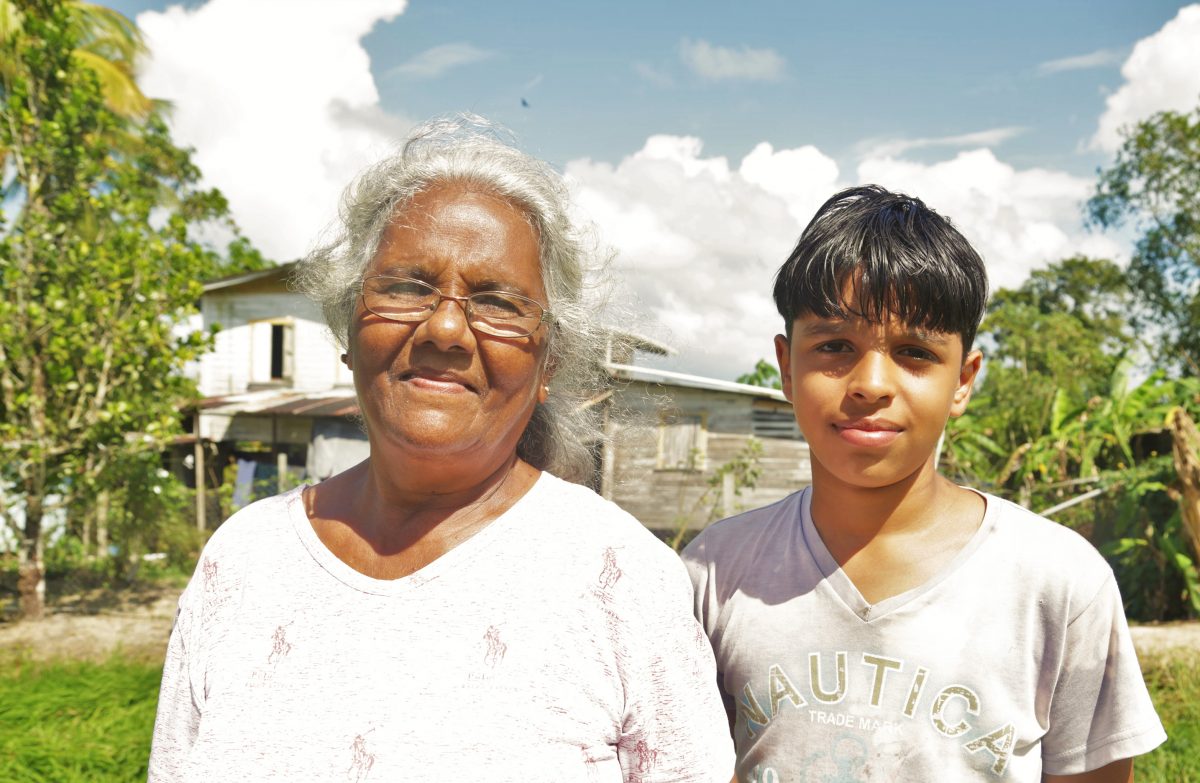Meet the ‘Bendorffers’
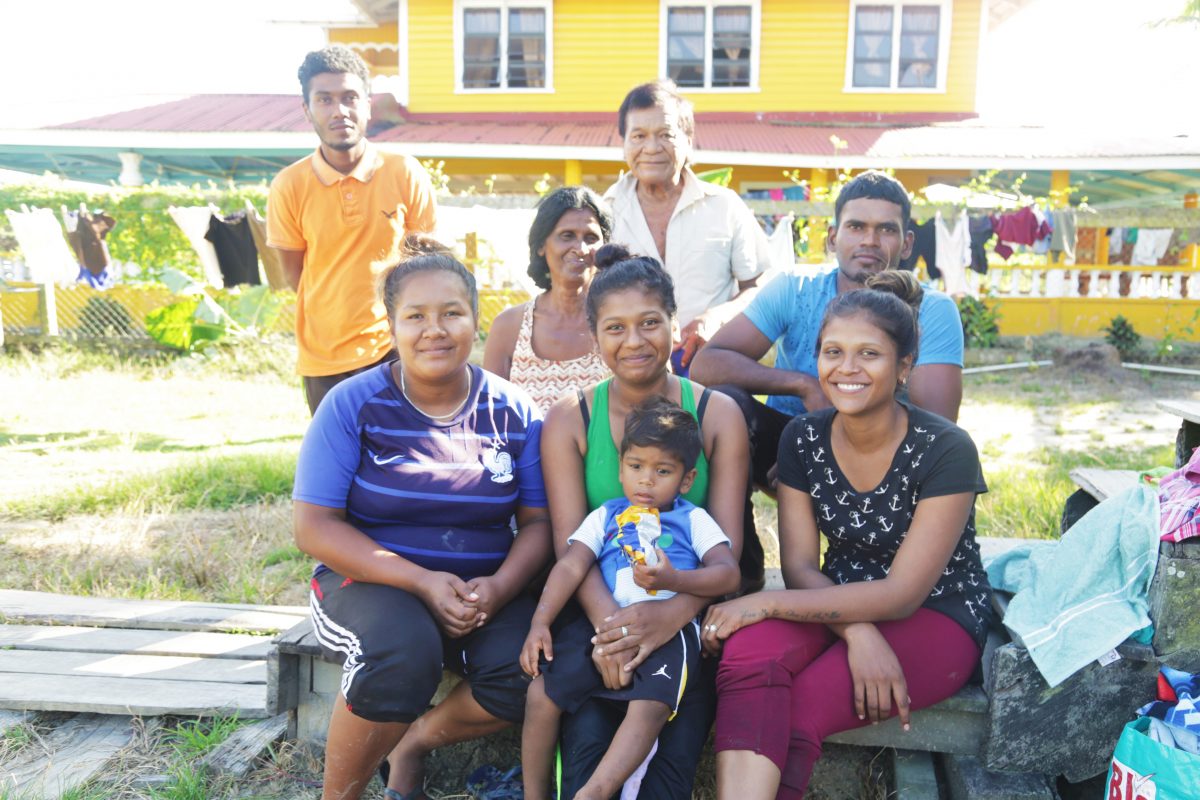
With no electricity or potable water, Bendorffers use solar panels, kerosene lamps and generators for power and rainwater for drinking and cooking, while water from the canals or the nearby Essequibo River is used to wash and bathe.
Home to 11 families, Bendorff is situated a mile away off the road from Larimakabra and between some verdant farms on the East Bank of Essequibo. Its people depend on farming for their livelihoods and live far apart from each other.
I walked along the dusty road to the village accompanied by three little girls from Larimakabra; we shared two umbrellas. The youngest of the three Williams girls, who was four, wore no shoes, yet did not complain about the heat or the long distance. She is used to the walk as she often accompanies her older siblings to ‘Auntie Alexis,’ who lives in Bendorff.
Alexis Kippins was in her kitchen with her 88-year-old mother, Shirley. They sat on the floor shelling pigeon peas, which Shirley likes in cook-up rice.
“It’s much better now,” Kippins told me. “…Back then [years ago] we used to have a lot of bush. I had four children who used to go to school and you know having young girls and with them having to walk out and worried about how safe it would be, my mom told us to come live with her at Vergenoegen.”
Her husband, she said, hails from Bendorff but at the time of my visit was away at the farm. She moved to live in Bendorff with relatives in her late teens and later met and married him. They have five children of which only one still lives with them – their youngest, a 15-year-old boy. He was also away attending a wedding in Wakenaam.
“I leave Vergenoegen when I was about 17/18,” she recalled. “I came to stay at my sister-in-law. You as lil girl you used to plant farm and that kind of thing when the holiday come. Every holiday I used to be happy to come. Though it was bush, Seeta [likely Seton] Hall had a farm. Seeta Hall used to be more down in Bendorff but on the other side. The place turn abandon now. There we used to get orange. If you used to see people, man, all on the bridge when payday and Saturday afternoon reach, it used to be bright. It had like couple logies at Seeta Hall. Due to the dry season, they used to get fire and the crops and everything burn and plenty of the Seeta Hall Estate burn down.”
Her mother’s aunt she said, was one of the first persons to settle in Bendorff. Her name was Ada Archer.
After Kippins moved back home years ago, she and her husband decided to plant the yard with fruit trees. At present, her soursop tree has many huge soursops.
As Kippins spoke, the little girls listened attentively while patting her dog. Her mother, by this time, was in the yard putting the peas to dry after which she began gathering twigs, which she intended to use as fuel on the fireside, where the dog’s food would be cooked.
Bendorff, Kippins said, is so inviting that she knew two men who travelled from the East Coast Demerara to make their home there.
“We glad for a road here,” she added. “You see up to Naamless out there, the road stop. If we get the road to come in here it will be real good. It got children from way down more in Bendorff walking out to go to school. My son he going to Zeeburg Secondary School and he would ride out from here and park his bicycle at some friends at Naamless but you see not everybody [fortunate] like he; a bus would pick him up from there. But here, it quiet, real nice area to live.”
Tara (only name given) lives with her husband; they are both pensioners. Tara was 11 years old when she lost her father and her uncle who took her and her siblings under his wings. Her uncle, who was a headmaster, bought the land she lives on in 1974, for Tara and the rest of the family to plant. Two years later she settled there to live.
“When I first come here, it was dull, dull. I used to live at Tuschen before. Really me can’t say I like this area but the area reasonable when you see it come to quietness,” she said. “When you see me deh in deh [her house], me nah got headache with nobody. Me buy black tank and me get rainwater. The road them grade it up in Christmas time, the road used to be more bad. You still got to walk out till out at the road and catch thing. So, hey suitable fuh me. Me got me sister in America and she was to put in for me since 1990. Me tell she, hear, nah worry with that thing, me nah able go live on big stress, you nah know when you gon get wuk. Let me stay right here and once me plant plantain, me know me gon eat.”
The woman said that though they both receive old age pensions she rears a few layers (hens) and her daughter who sells at Parika Market, sells the eggs for her. A young boy stood at Tara’s side. His family, Venezuelan migrants, have been living at Tara’s place in Tuschen. He visits with her and her husband on weekends and now that school is out, he is spending time with them sharing their company and assisting. In return, she helps to pay for his transportation to school and his meals.
Two teenage boys some lots down from Tara swam in a clean section of the canal but the part of the canal in front of Tara’s home was filled with foliage. This was one of her major peeves, that the Neighbourhood Democratic Council (NDC) or anyone else cleaning the canal would not clean her part though she pays her taxes. It was only cleaned when she or her husband did it and now that he has arthritis, he is unable to clean it. Tara said that in the past she sprayed the edges then got into the canal and used a scythe to cut he weeds from the corner to the middle. She hopes that the NDC can step in, now that she and her husband have aged.
A boat with persons coming from the backdam passed by. The two boys who had been swimming earlier were getting out of the canal and they walked into one of the yards; I followed and found their father, Phillip Kingston.
Both of Kingston’s parents grew up at Victoria, East Coast Demerara but he grew up in Bendorff and has spent all of his 48 years in the village. He pointed out that the land he lived on was in his family for more than 200 years. “Back in the days, the place when they go to boundary it off and when people come and them pick up, they name the area by the name of the person that picked it up,” he explained. “… We got Leegay Creek which was like my great-great-great grandfather so this place here, deh about long. I live on Leegay land.
“From a boy to now this place ain’t change much, you know. To me we ain’t really get no development in this place but it’s just actually the same way so instead of a track we get something nearly looking like a road. For 40 years they promising that them gon build the Del Conte Line and them can’t finish it as yet.”
Kingston said that when the last survey was done on the Del Conte Line several years ago, he was the leading compass man.
The man boasted that there is no part of Guyana that could make him as comfortable as Bendorff. “This is a happy place. Any part of Bendorff and anybody I could turn to whether day or night they ready to help you, that’s how we live,” Kingston said.
Once a month his family purchases groceries from Parika Market. On Sundays a vehicle might make its way along the road in Bendorff to pick up persons heading to the market. However, sometimes persons have to walk before they can get a vehicle at Naamless. On their return, they often pay a taxi $1,500 as they have to get their groceries home. Some persons would pay the bus driver $300, $400 or even $500 to take them to their homes.
Kingston said he did not want much, a road and electricity, as he is fine without water. According to him, the rainwater is much better than what he would get from the Guyana Water Inc.
Amina Alberts and her family rode along the canal in a boat, adults and children, smiles on their sun-burnt faces. They had gone fishing at their farm, some three hours’ boat ride away from Bendorff, where they had camped overnight. They live in Naamless, but to get to their farm, they need to first go along the canal in Bendorff and pass other villages. They were heading back to their home with their sweet-water fish catch.

